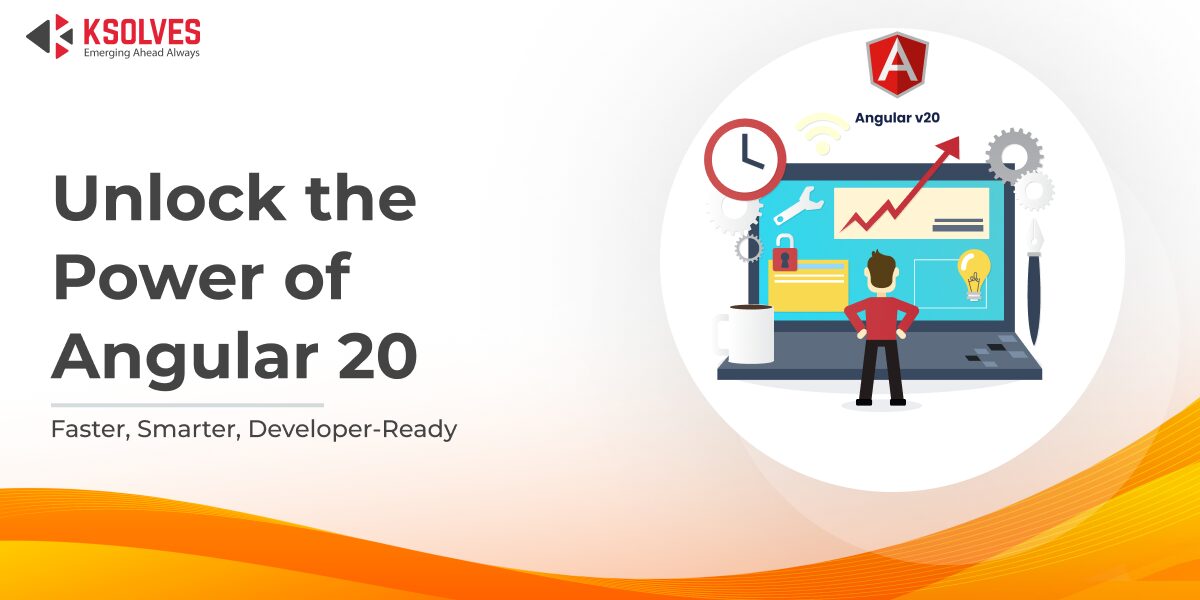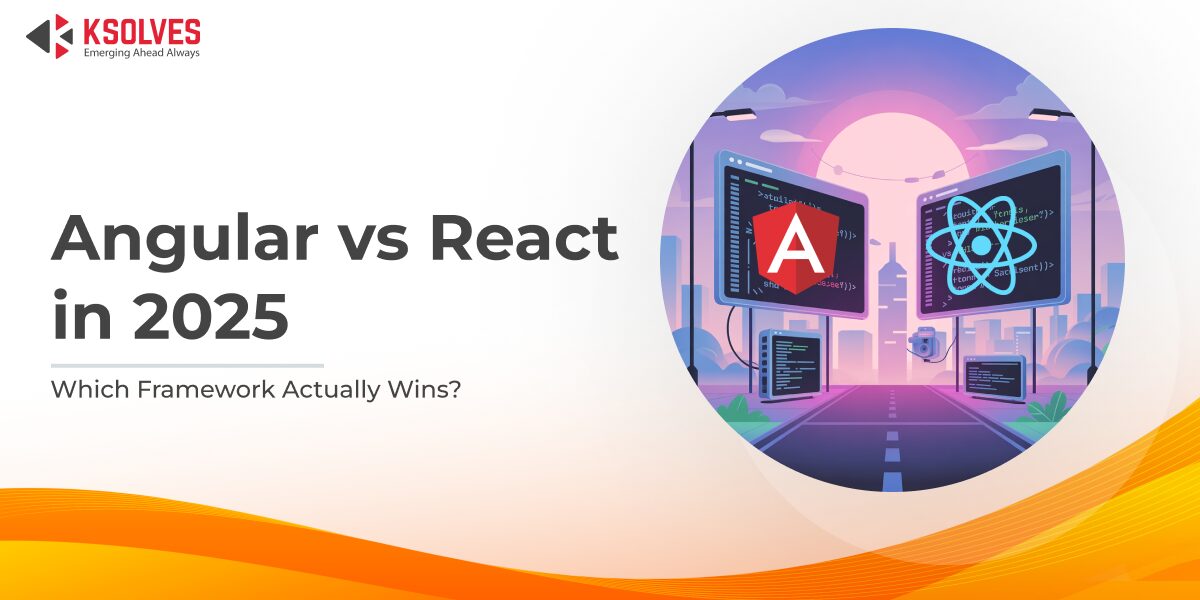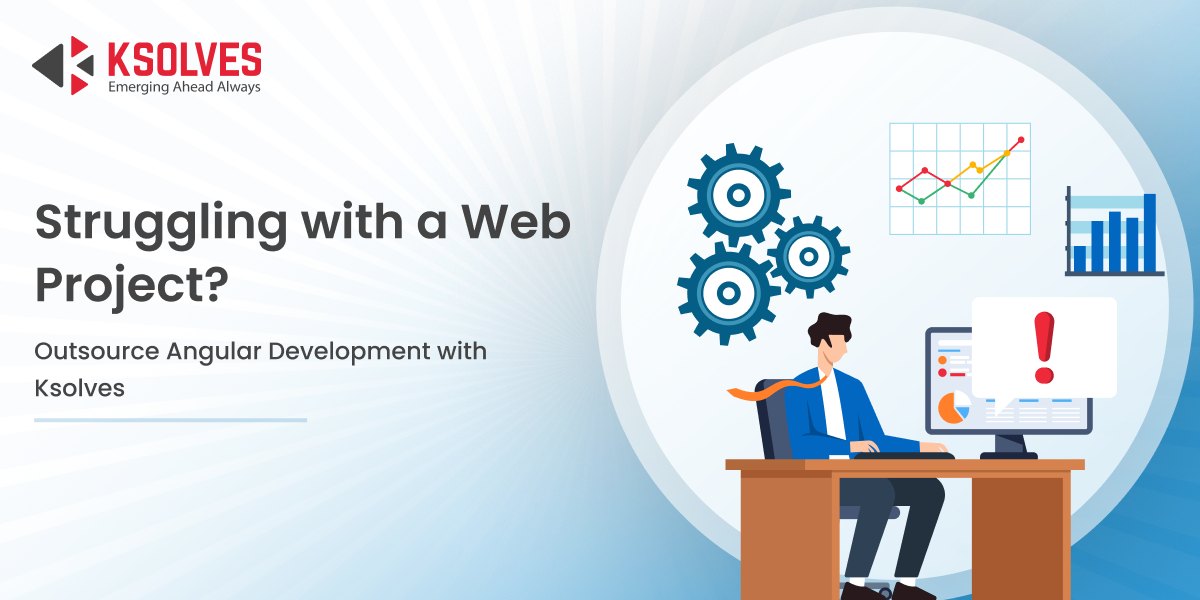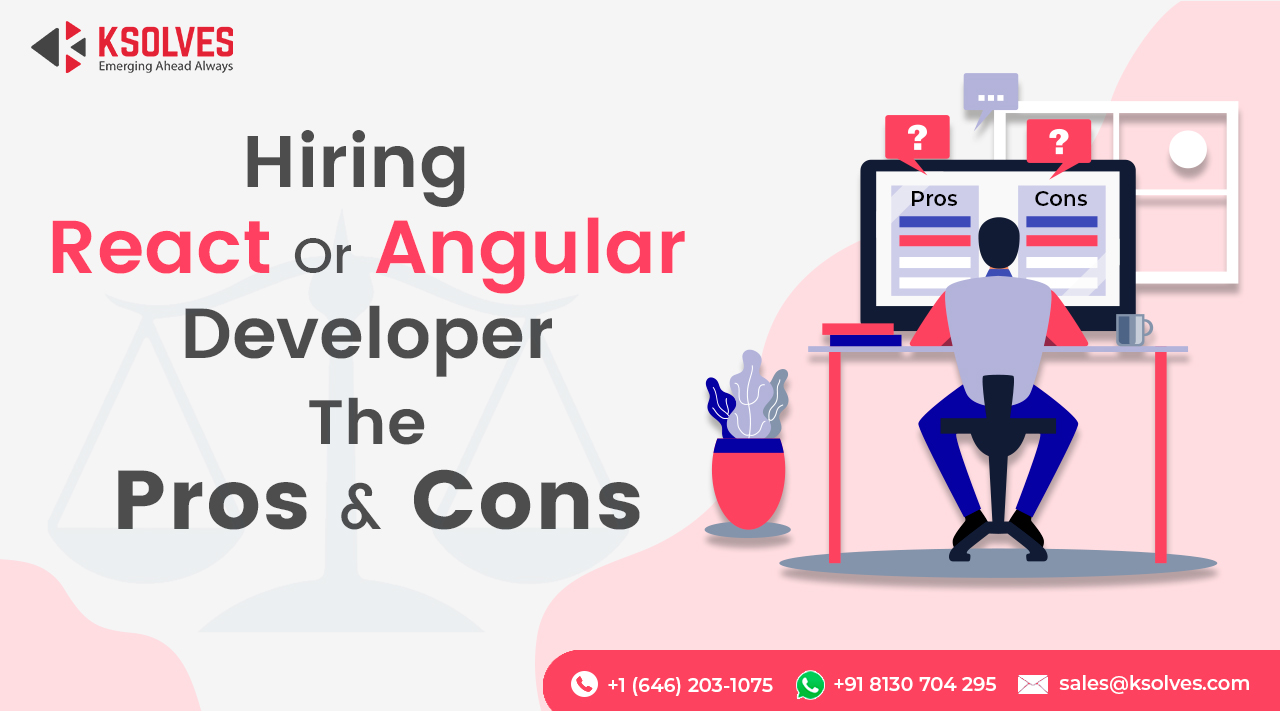What’s New in Angular 20? New Features, Improvements, and Developer Upgrade
Angular
5 MIN READ
October 28, 2025
![]()

Angular 20 is the latest stable version and is changing the way developers build web apps. Imagine faster apps, cleaner templates, smarter reactivity, and smoother server-side rendering – all in one release.
This major update is Angular’s bold step toward a reactive, modern, and high-performance framework. Whether you’re a frontend architect, a seasoned Angular developer, or just curious about the latest web technologies, Angular 20 brings features that make your code smarter, faster, and easier to maintain.
Whether you’re upgrading from Angular 18 or 19, or just exploring the latest features, this guide breaks down everything you need to know. Let’s get started.
High-Level Highlights of Angular 20
Angular 20 packs a punch with features that make it faster, smarter, and more developer-friendly. Here’s why you should pay attention:
- Signals & Effects are stable: Angular’s next-gen reactivity model is now production-ready, delivering fine-grained updates and better app performance. Signal-Based Forms are still experimental.
- Zoneless change detection (preview): Move beyond Zone.js for a simpler, faster, and more predictable change detection model.
- SSR & hydration improvements: Incremental hydration and smarter server-side rendering ensure faster first paints, smoother UX, and better SEO.
- Modern control flow syntax (@if, @for, @switch): Write cleaner, more expressive templates while still being compatible with existing *ng directives – now deprecated and scheduled for removal.
- Extended diagnostics: Catch mistakes earlier in development with stricter type checking and smarter error warnings.
- CLI & tooling upgrades: Faster builds, improved debugging, and full Signals support in DevTools streamline your workflow.
Angular 20 New Features and Improvements
1. Reactive Signals & Effects (Stable)
Angular 20 cements Signals and Effects as the framework’s go-to approach for reactivity, making it easier than ever to build high-performance, reactive applications.
- Stable Signals APIs: effect(), toSignal(), and toObservable() are now production-ready, offering precise state tracking and reactive updates.
- Updated rendering lifecycle APIs: afterNextRender() and afterEveryRender() replace the older experimental afterRender(), giving developers better control over post-render logic.
- Linked signals (linkedSignal()) allow derived state management, making it simple to create reactive dependencies between signals.
- Pending tasks API streamlines asynchronous state handling, reducing boilerplate and potential bugs.
2. Zoneless Change Detection (Preview)
Angular 20 introduces one of its most anticipated innovations: moving beyond Zone.js with zoneless change detection. This new mode allows Angular to track only the reactive changes that matter, rather than patching every browser API. The result? lighter, faster, and more predictable applications.
- Enable zoneless mode in your app:
bootstrapApplication(AppComponent, {
providers: [provideZonelessChangeDetection()]
});
- Or via the CLI: –zoneless
- Angular now reacts only to relevant state changes, reducing unnecessary re-renders and improving performance.
3. New Template Syntax & Control Flow
Angular 20 introduces a cleaner, more modern templating system that feels closer to plain JavaScript, making templates easier to read and maintain.
- Modern control flow: @if, @for, and @switch/@case/@default replace the legacy *ngIf, *ngFor, and *ngSwitch, resulting in less boilerplate and clearer intent.
- Enhanced JavaScript expressions are now supported in templates:
- Exponentiation: {{ a ** b }}
- Tagged template literals: {{ translate`welcome_message` }}
- void operator in event bindings
- in operator for property existence checks
4. Extended Diagnostics & Type Checking
Angular 20 strengthens developer confidence with smarter, earlier error detection:
- Detects missing structural directive imports.
- Warns about uninvoked trackBy functions in @for.
- Flags risky operator combinations, such as mixing ?? with boolean operators.
- Enforces stricter host binding checks through typeCheckHostBindings.
5. Dynamic Component Creation Made Easy
Angular 20 makes programmatically creating components smoother and more powerful, giving developers better control over dynamic UIs.
- Pass directives directly into createComponent() for cleaner, more maintainable dynamic components.
- Declarative input assignment with inputBinding() simplifies data flow and reduces boilerplate.
- Two-way bindings and outputs are now fully supported, making it easier to handle user interactions in dynamically created components.
6. SSR & Hydration Upgrades
Angular 20 brings smarter, faster server-side rendering (SSR), helping apps load quicker and deliver a better user experience.
- Incremental hydration is now stable, meaning Angular hydrates only the parts of the page that need it, reducing unnecessary work.
- Event replay ensures no user interactions are lost during hydration, keeping your UI responsive from the first paint.
- Route-level rendering modes (CSR, SSR, prerender) are now fully production-ready, giving developers more flexibility in optimizing load times and SEO.
7. CLI, Tooling & Developer Experience
Angular 20 enhances the developer workflow, making building, debugging, and testing apps smoother and more efficient.
- Clearer CLI diagnostics provide actionable insights, helping developers catch issues faster.
- Angular DevTools now fully supports Signals, giving real-time visibility into reactive state changes.
- Built-in global error handling via provideBrowserGlobalErrorListeners simplifies monitoring and debugging.
- TestBed improvements make testing reactive apps easier and more reliable.
- Full compatibility with TypeScript 5.9 ensures a seamless development experience with the latest language features.
8. Deprecations & Breaking Changes
Angular 20 introduces a few important changes you should be aware of before upgrading:
- Legacy directives: *ngIf, *ngFor, and *ngSwitch are now deprecated in favor of the new control flow syntax (@if, @for, @switch), but not removed and can still be used in Angular 20.
- CLI updates: The old flag –experimental-zoneless has been renamed to –zoneless.
- Deprecated APIs: TestBed.flushEffects() is no longer recommended and may be removed in future versions.
- Stricter host bindings: Invalid host binding expressions now throw compile-time errors, helping catch issues early.
Why Developers Should Use Angular 20
Angular 20 isn’t just another version – it’s a major step forward that brings tangible benefits for developers building modern web applications. Here’s why upgrading (or starting new projects) with Angular 20 makes sense:
- Faster, leaner apps: With stable Signals and zoneless change detection, Angular 20 reduces unnecessary re-renders, improving performance even in large-scale applications.
- Cleaner, more expressive templates: The new control flow syntax (@if, @for, @switch) and enhanced JavaScript support make templates easier to read, maintain, and debug.
- Better developer experience: Enhanced CLI diagnostics, DevTools support, and stricter type checking help catch errors early and streamline workflows.
- Robust server-side rendering (SSR): Incremental hydration and route-level rendering modes improve SEO, load times, and Time to Interactive (TTI).
- Dynamic, scalable UIs: Improved APIs for dynamic component creation simplify building dashboards, CMSs, and interactive interfaces.
- Future-ready architecture: Angular 20 lays the foundation for reactive, zoneless apps, positioning developers to leverage upcoming features with minimal friction.
Upgrade to Angular 20: Challenges and How Ksolves Can Help
Upgrading to Angular 20 promises better performance, modern templates, and a more reactive framework, but like any major upgrade, it comes with its own set of challenges.
The Challenges Developers Face
- Legacy Template Migration: Shifting from *ngIf, *ngFor, and *ngSwitch to the new @if, @for, and @switch can be daunting for large codebases.
- Zoneless Adoption: Integrating zoneless change detection into existing apps requires careful planning and testing to avoid breaking reactive flows.
- SSR & Hydration: Ensuring incremental hydration and route-level rendering works flawlessly in dynamic applications can be tricky.
- Breaking Changes & Deprecations: Stricter host binding rules and deprecated APIs like TestBed.flushEffects() may disrupt legacy code.
How Ksolves Makes the Upgrade Seamless
At Ksolves, a leading Angular development company, we don’t just migrate code – we transform it for future-ready Angular applications:
- Strategic Assessment: We analyze your existing app to pinpoint areas affected by template, reactivity, or SSR changes.
- Step-by-Step Migration: Templates, Signals, Effects, and zoneless change detection are carefully implemented without disrupting functionality.
- Performance & Stability: SSR, incremental hydration, and route-level rendering are optimized for SEO, speed, and reliability.
- Testing & Validation: Rigorous testing with Angular’s extended diagnostics ensures bugs are caught early, keeping your app stable.
- Tailored Support: From consultation to full-scale migration, we provide guidance aligned with your business goals and timelines.
The Outcome
Partnering with Ksolves for your Angular 20 upgrade delivers real, measurable benefits:
- Faster applications
- Cleaner, modern codebase
- SEO & performance gains
- Reduced risk and downtime
- Enhanced developer productivity
- Future-ready architecture
Conclusion
Angular 20 empowers developers to build faster, smarter, and more maintainable web applications. From stable Signals and zoneless change detection to modernized templates and advanced SSR, this release is designed to reduce complexity, enhance performance, and future-proof your apps.
The true value of Angular 20 lies not just in its features, but in the developer experience it unlocks. It enables teams to write cleaner code, ship faster, and deliver superior user experiences.
![]()







Author
Share with